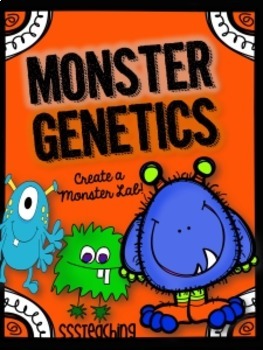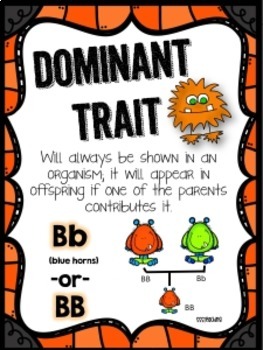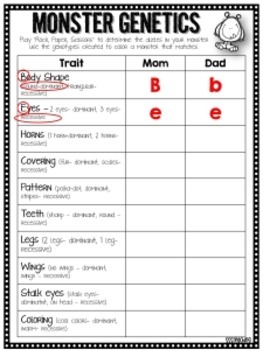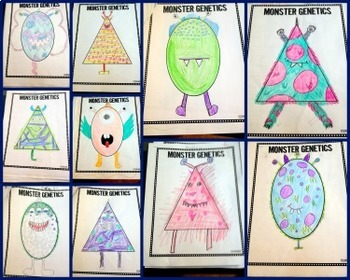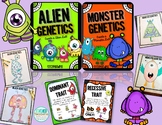Monster Genetics (Traits, heredity, punnett squares, dominant, recessive)
- Zip
What educators are saying
Also included in
- Introducing and reviewing genetics (dominant/recessive traits) in your classroom? This activity pack is perfect for upper elementary and middle school! This Create-A-Monster & Alien Lab is engaging and fun while focusing on genetics and heredity in the classroom.Each student plays "Rock, Paper,Price $16.99Original Price $19.75Save $2.76
Description
Introducing and reviewing genetics (dominant/recessive traits) in your classroom? This activity pack is perfect for upper elementary and middle school! This Create-A-Monster Lab is engaging and fun while focusing on genetics and heredity in the classroom.
Each student plays "Rock, Paper, Scissors" to determine which genes they inherit from their parents then their monster displays the dominant or recessive traits accordingly. My students thoroughly enjoyed this short lab to reinforce the vocabulary and skills covered earlier in the chapter.
The pack includes:
*updated instructions - 3/25/2020
*posters for dominant and recessive trait
*recording sheet for traits
*2 body types for your monster
*lab sheet to extend thinking
*Punnett square practice of traits from your monster
+ examples and samples of work to see what completed papers and directions should look like.
If you are covering genetics, heredity, genes, dominant and recessive traits this year then this activity is a MUST! It is great for any time of the year and creatively engages students in the learning process!
*****************************************************************************
To get credit for future TPT purchases:
Click on “My TPT” then “My Purchases” in the upper right corner. Beside each you’ll see “provide feedback” – it should be blinking. Click and you can rate the product and leave comments about what you think. I love hearing your feedback on products!
*****************************************************************************
For more FREEBIES, new products, and ideas:
*Click the green star near my store name for product updates and premieres!
*Follow my blog SSSTeaching for teaching ideas and pictures of what is going on in my classroom.
*You can also find me on Facebook (exclusive offers), Pinterest, and Instagram!

